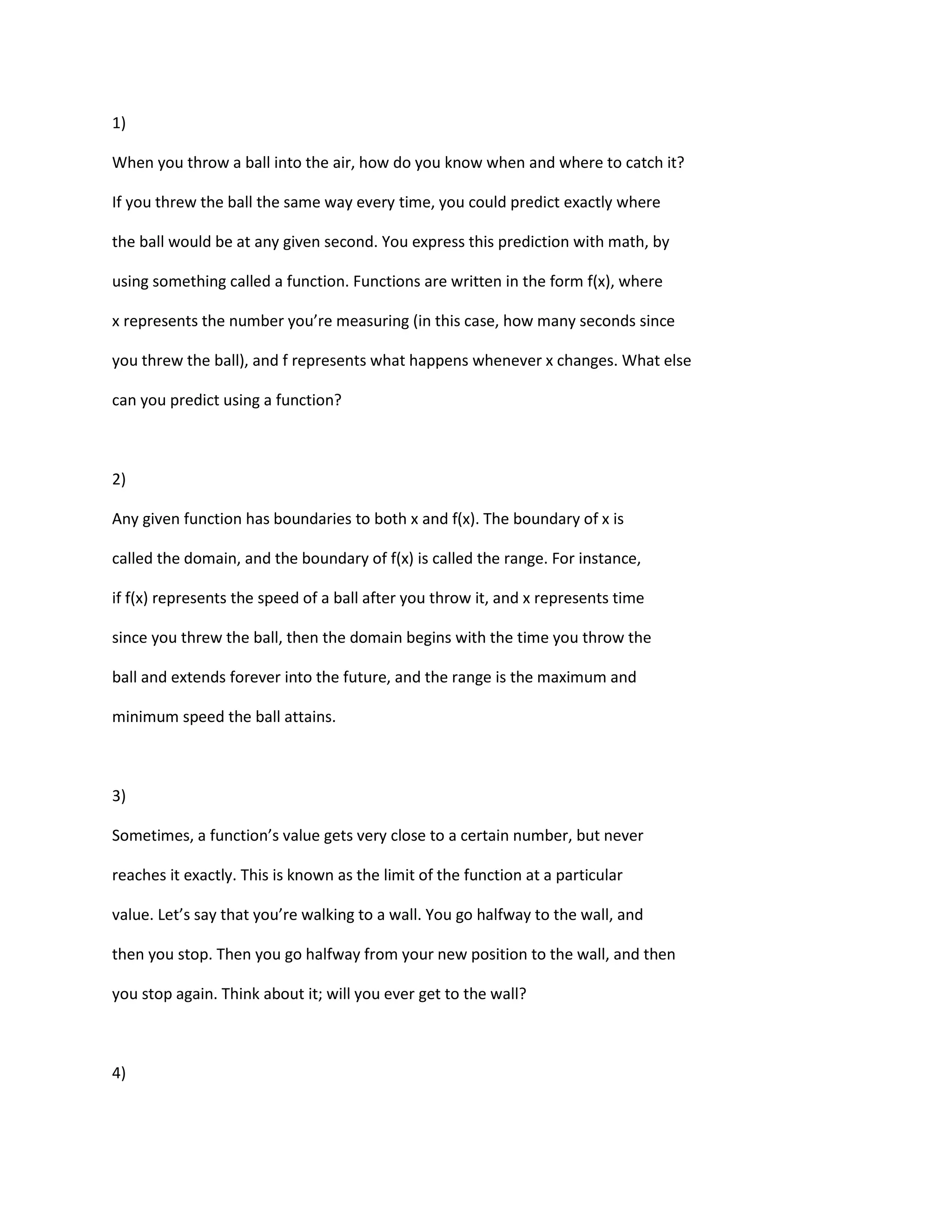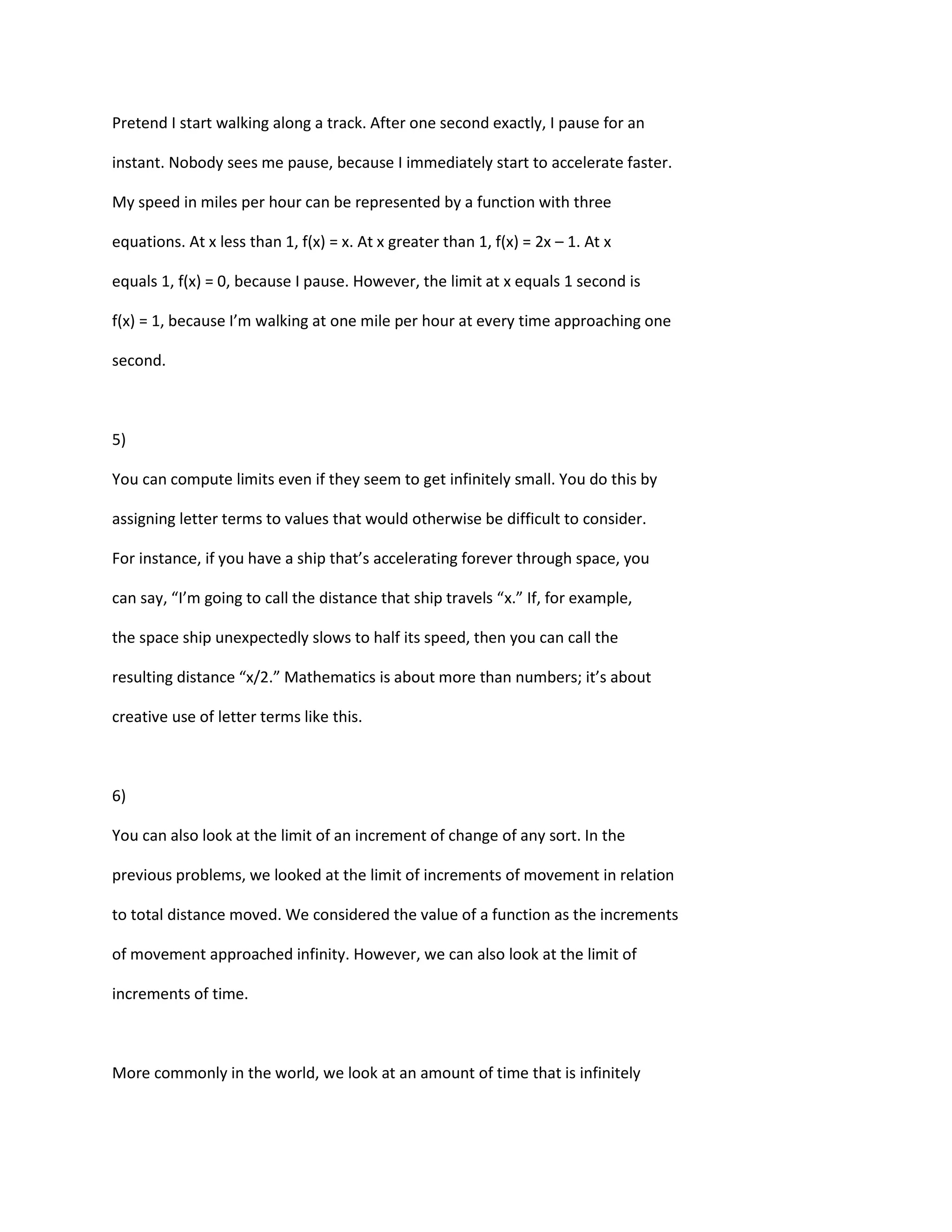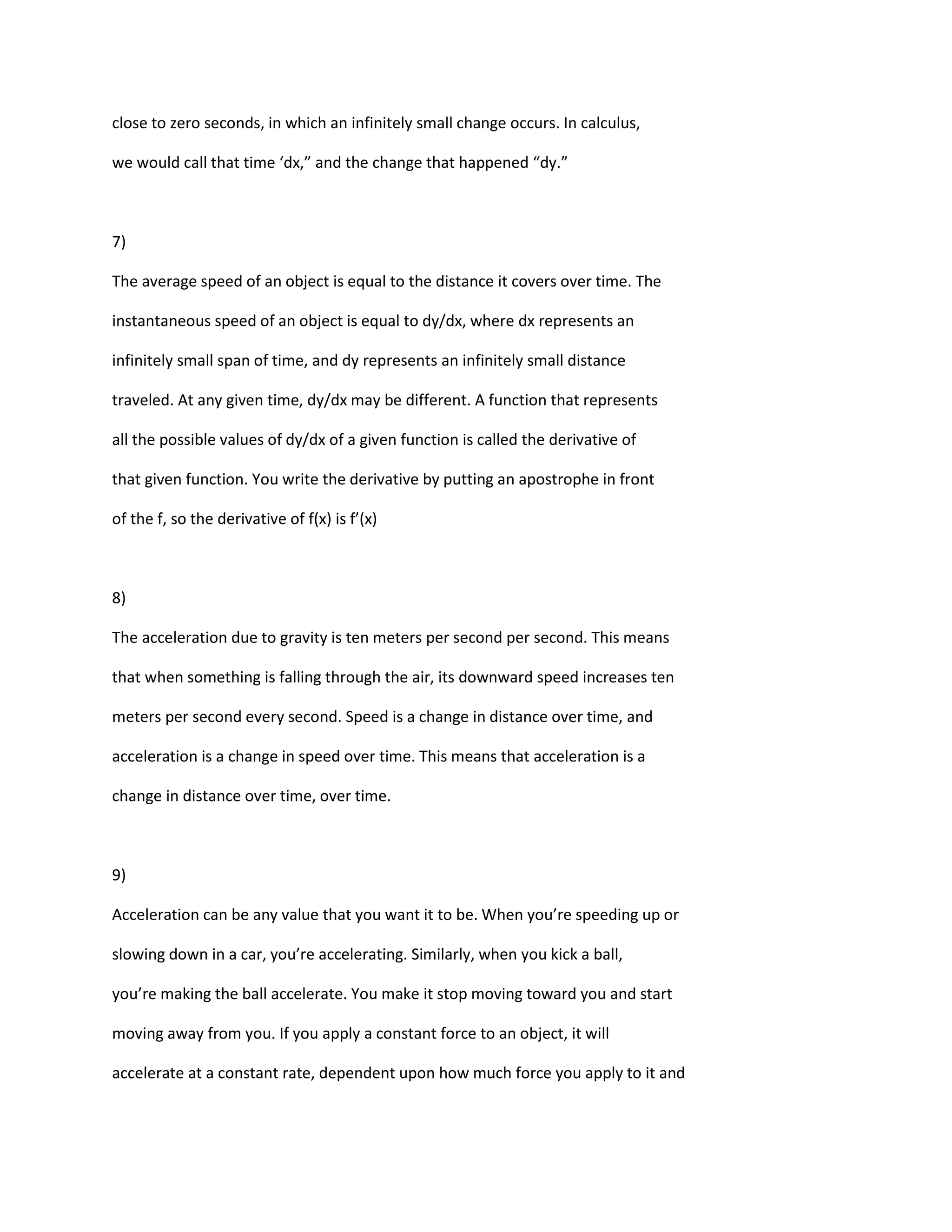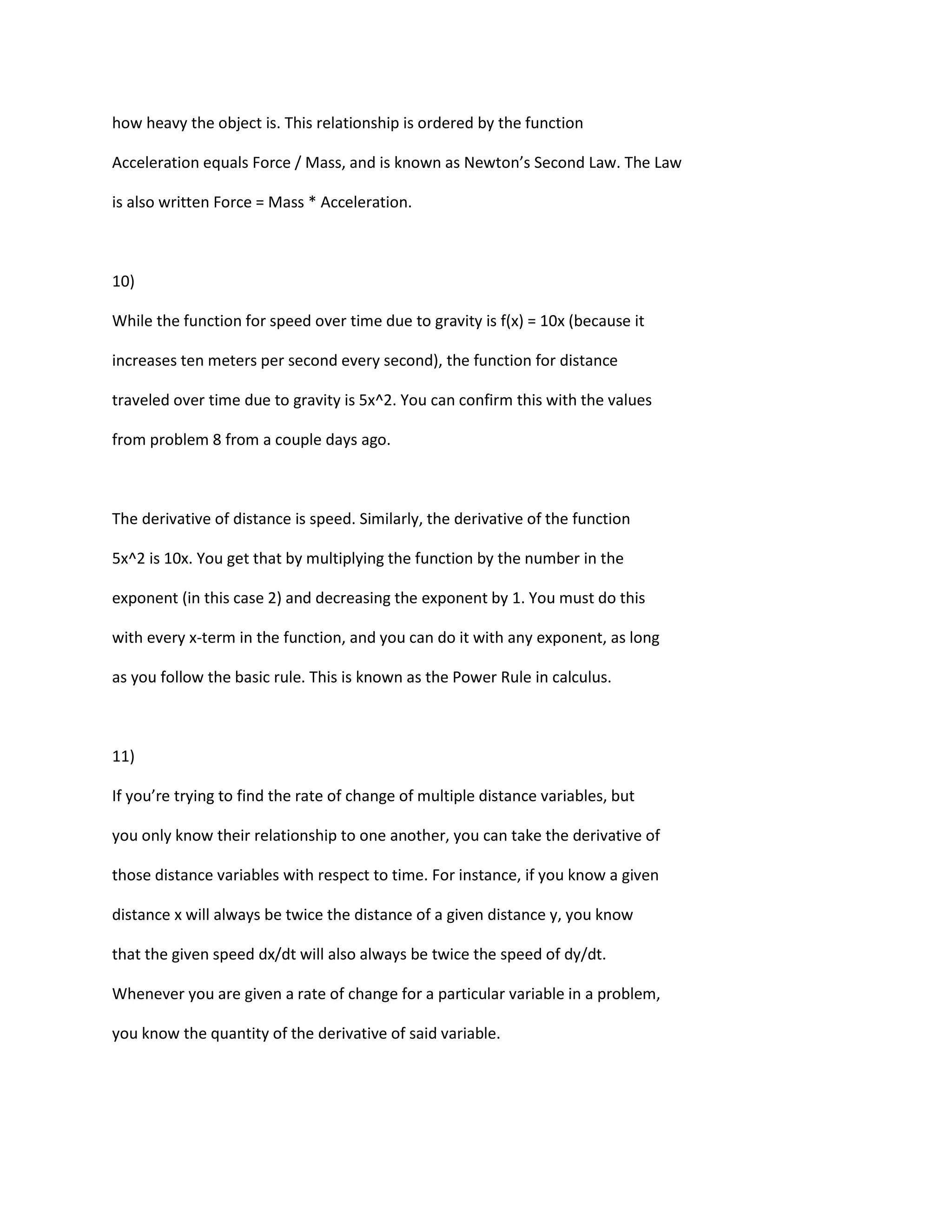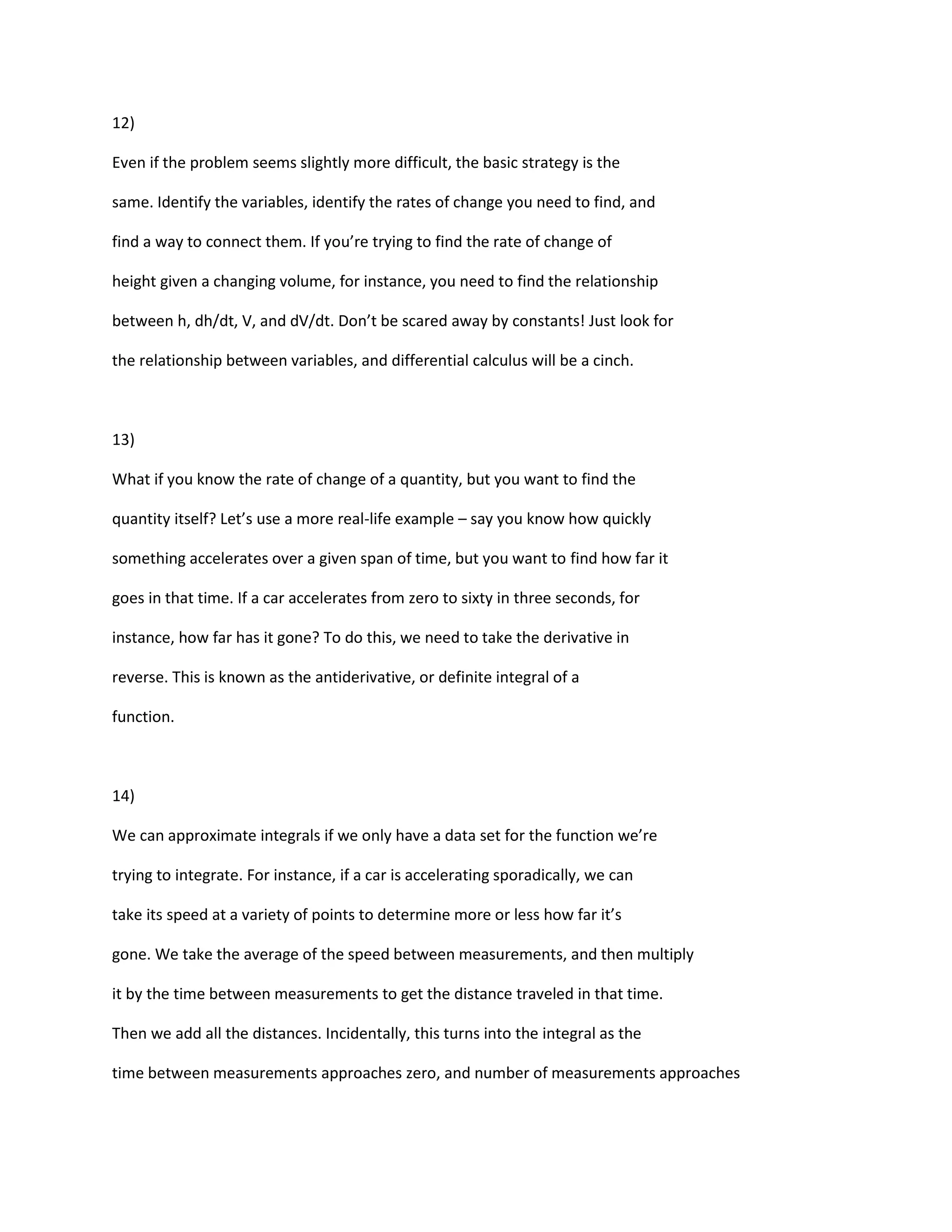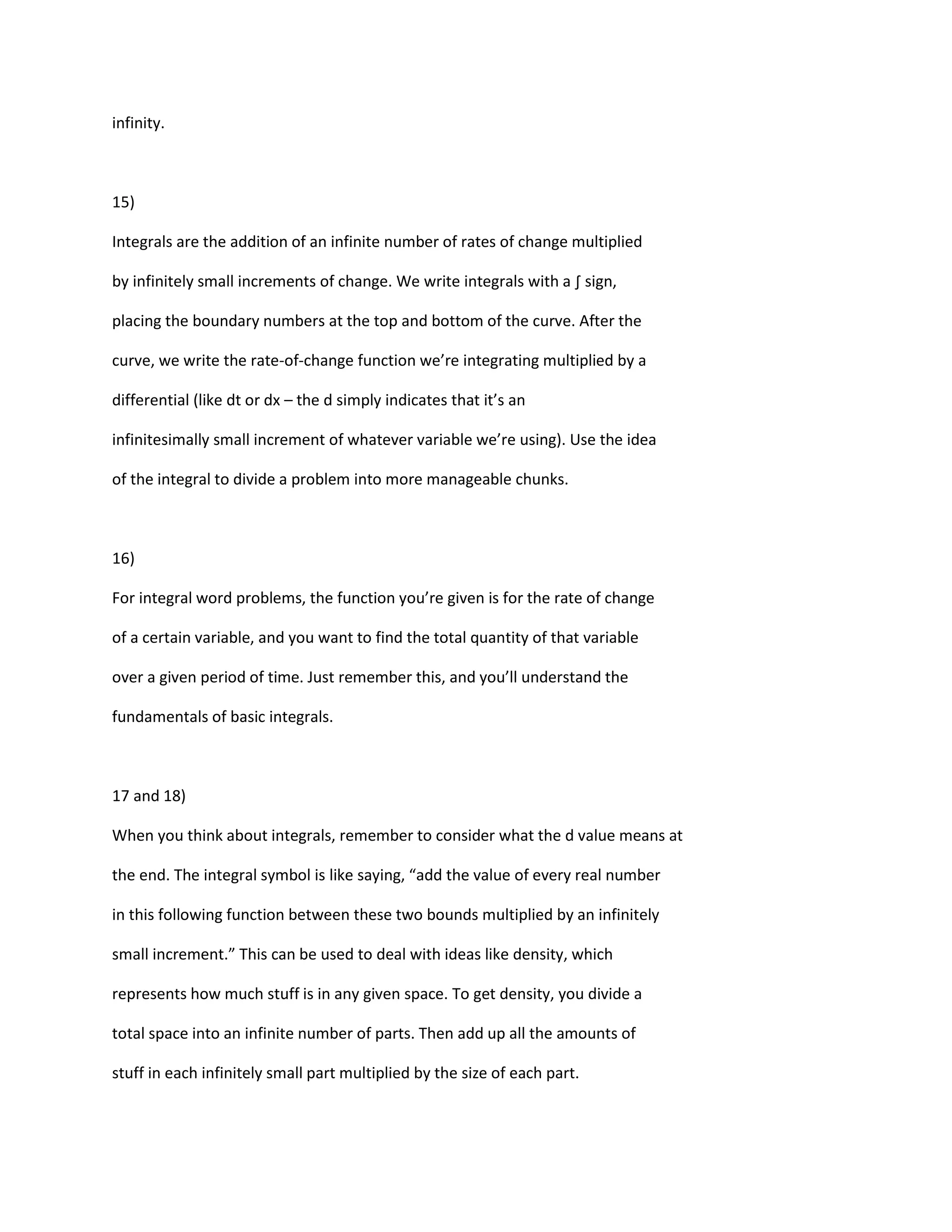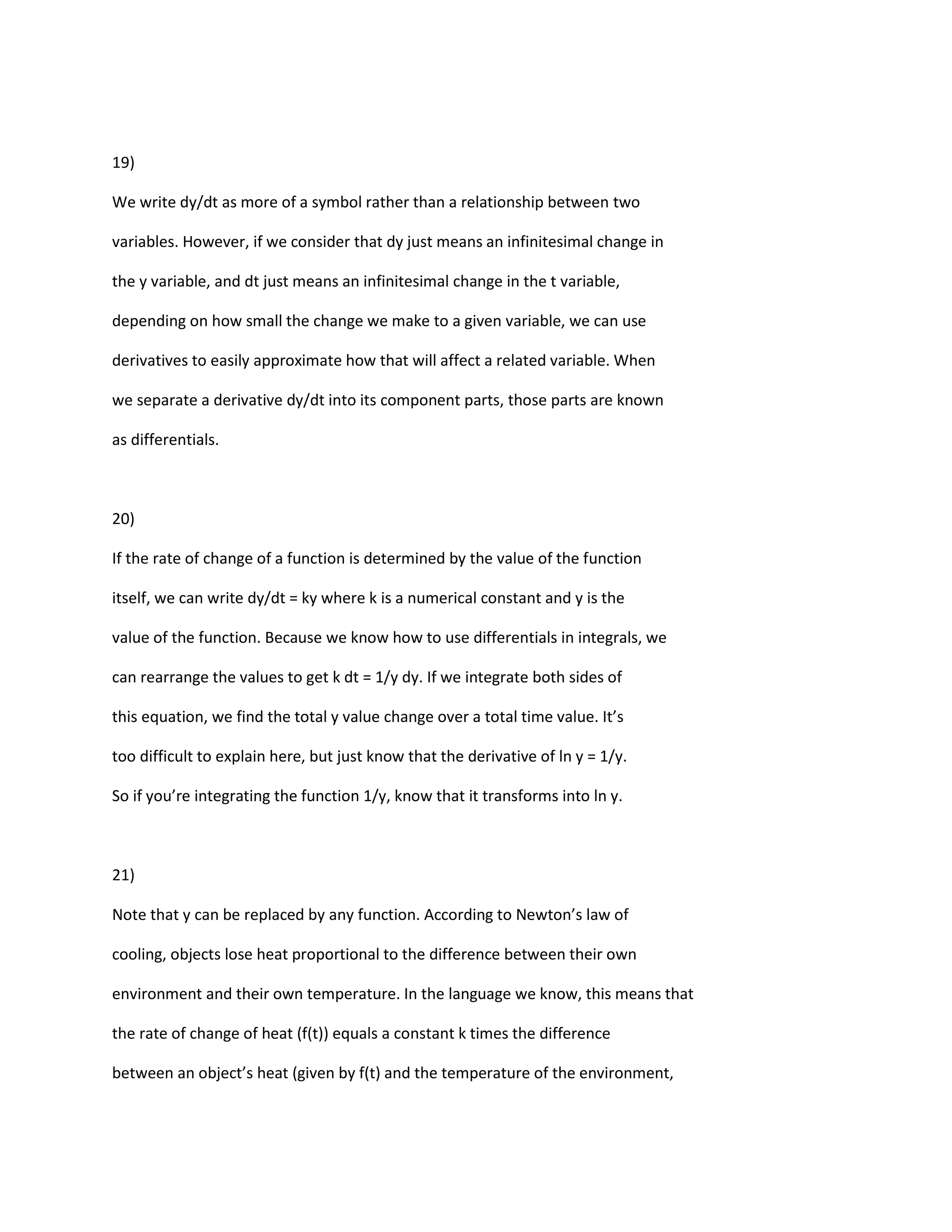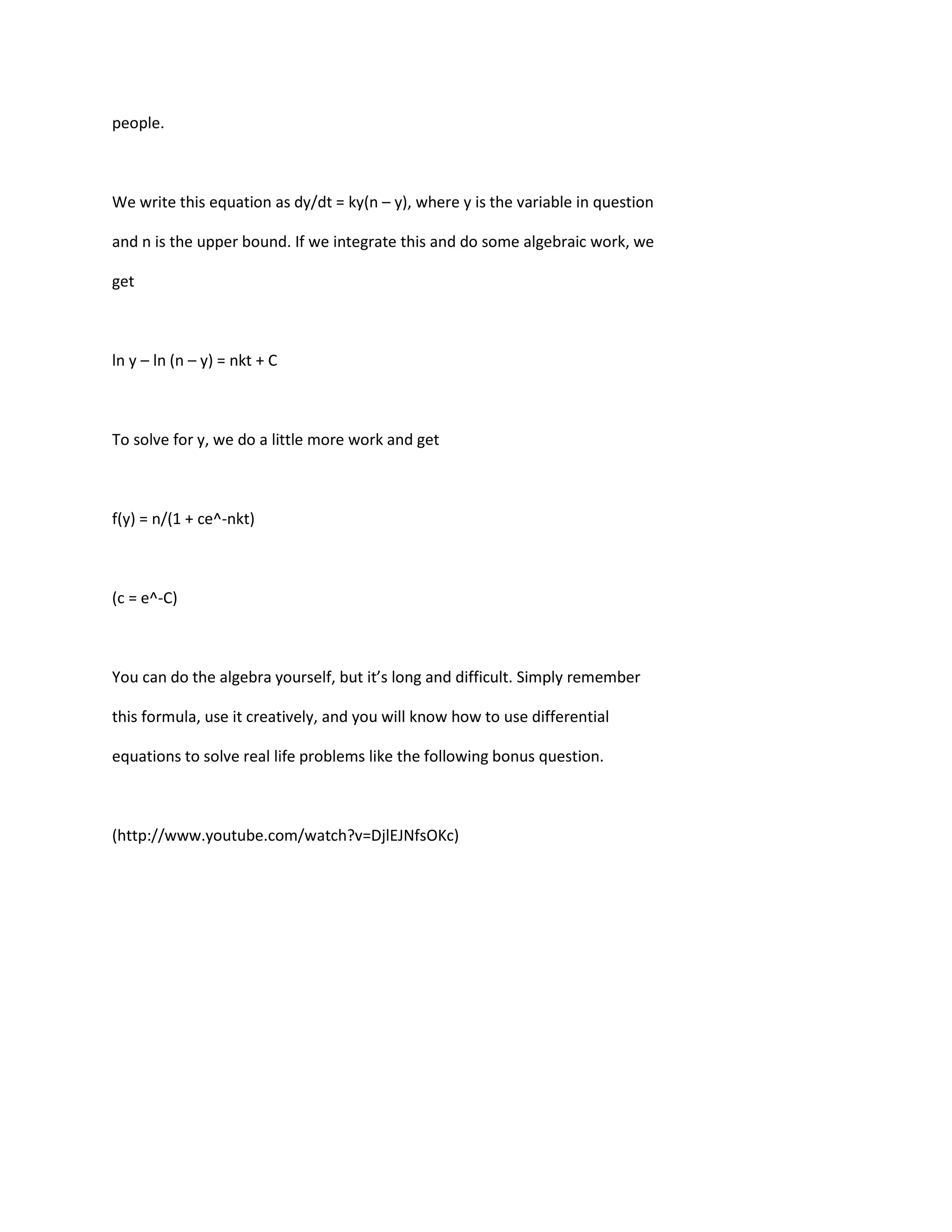1) Functions can be used to predict where a thrown ball will be at any given time. A function relates an input variable like time (x) to an output variable like the ball's position or speed (f(x)).
2) A function has boundaries for its input (domain) and output (range). For a function describing a ball's speed over time, the domain is all time after being thrown and the range is the minimum and maximum speeds.
3) Sometimes a function's output gets infinitely close to but never exactly reaches a number, known as the limit of the function.
